
Nowadays there is so much focus on visuals and acoustics that we have neglected our sense of smell to such an extent that some of us have nearly lost their sensibility. Many of our memories, especially our childhood memories are linked with a fragrance, which is untimately associated with flowers and plants. Fragrance has an exceptional influence on our wellbeing, our mood, our appetite and our mental health.
To walk around Fern Hill gardens in South County Dublin in January can send you on a search. You walk a woodland path among mature conifers and tree ferns, but what captures you is a scent. A cloud of sweet honey permeates the area as you search for a source. Sarcococca confusa – Christmas box – is an unassuming plant, a dark evergreen, with unremarkable white flowers, and one of many plants which don’t intensify in fragrance the closer you get. Sticking your nose right in still leaves you uncertain that this could be the source, but from a small distance it is unmistakable.
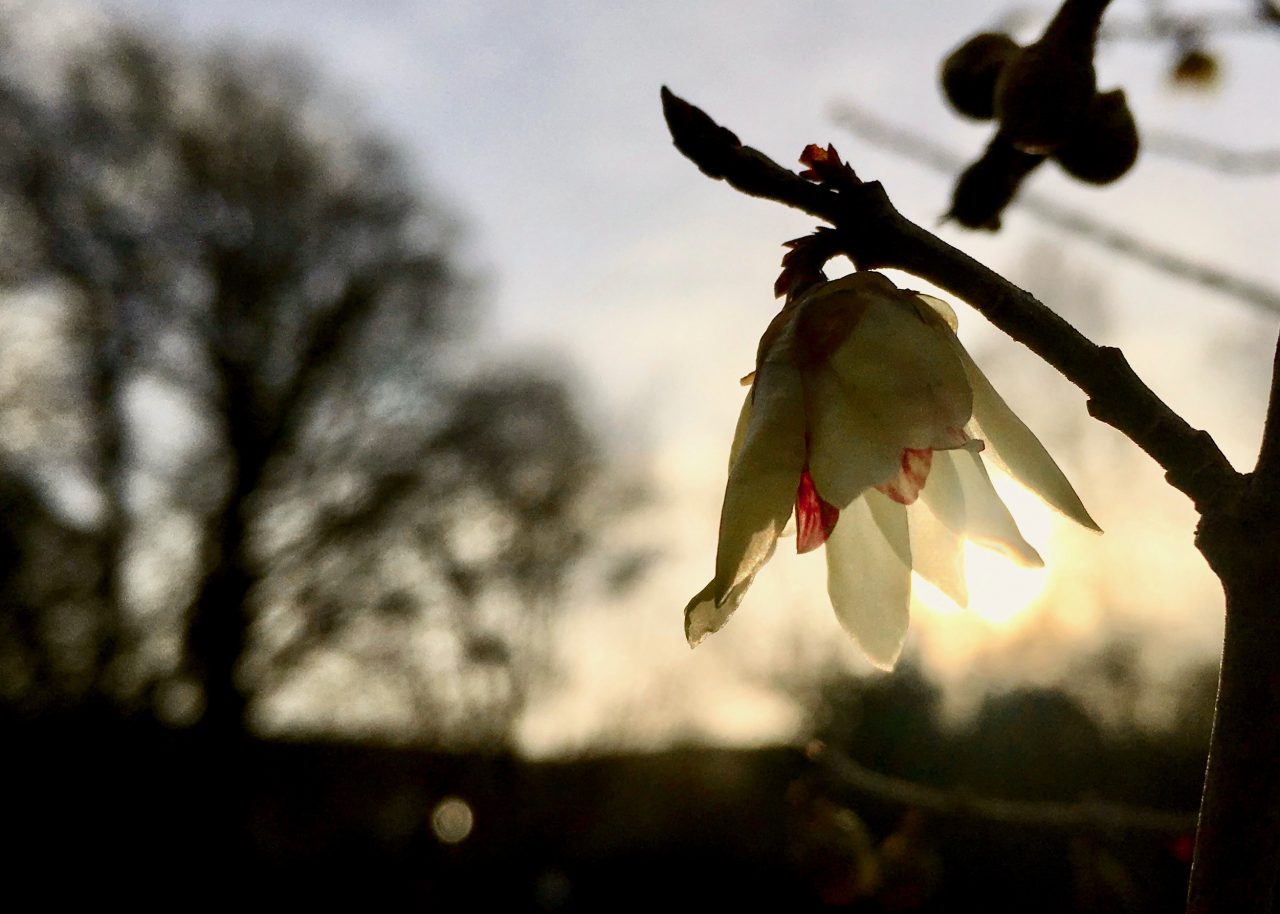
Chimonanthus praecox
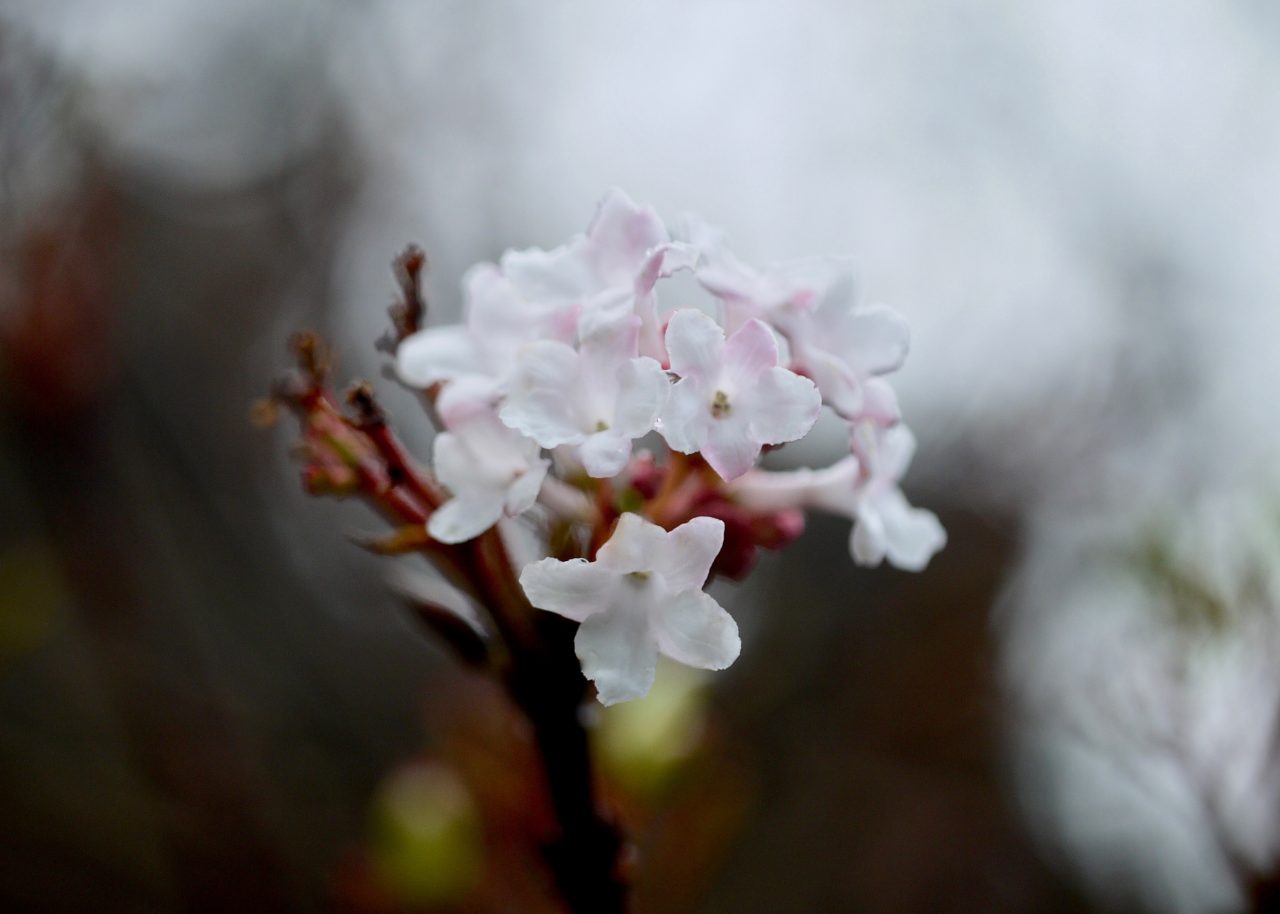
Viburnum × bodnantense Dawn
In winter, scent is a powerful force when there is relatively little to look at. The little tassel flowers of witchhazel (Hamamelis) or pendulous bells of wintersweet (Chimonanthus praecox) contribute a gentle orange-yellow glow against the green and brown of winter, but their scent – gentle yet intoxicating – makes their presence felt. I will never forget the day old Sally Walker of Fernhill introduced me to the sweetest fragrance of vanilla ice cream under an Azara microphylla in full flower.
Somewhat showier, and the kind of plant you might notice as you pass by in late winter, the semi-evergreen Daphne, Jacqueline Postill, is worth pausing for as its clusters of small pink flowers too are remarkably fragrant. Small and long-lived, it is a plant worth growing at the corner of a path or anywhere you’ll pass as the sun gains in intensity and spring seems less of a distant hope. Similar are Viburnums, some of which can flower from Autumn to Spring during a mild Winter.
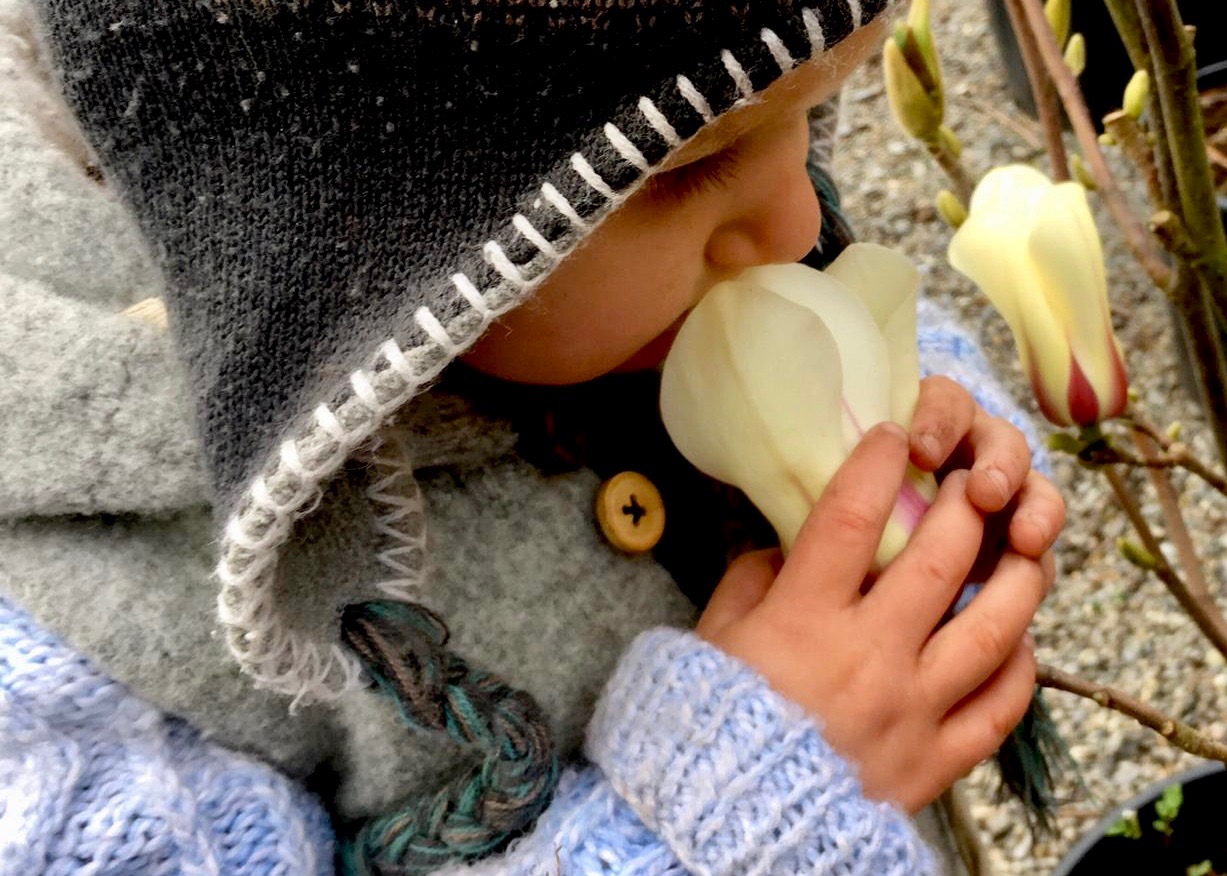
Magnolia Sunrise
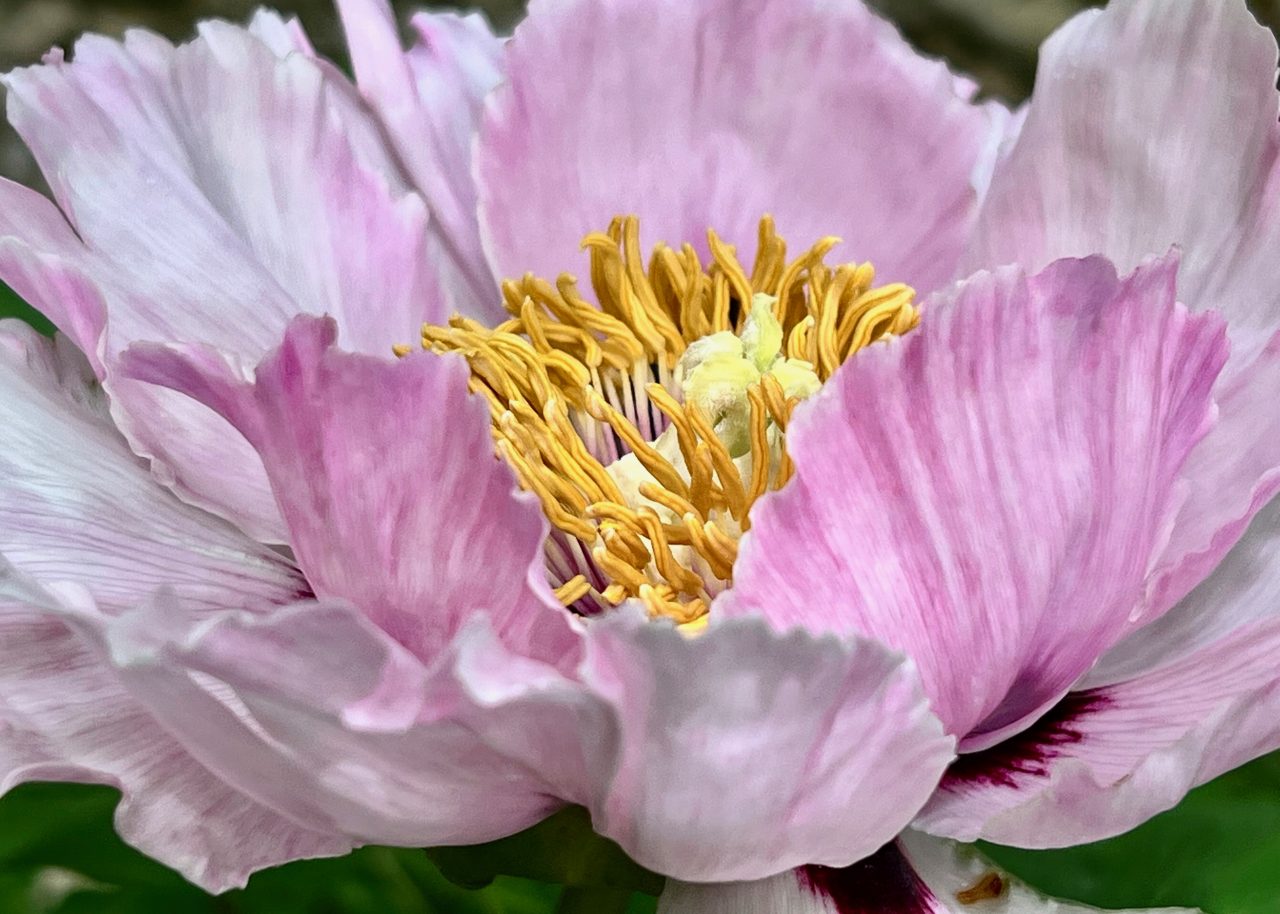
Paeonia
In spring, Magnolias, when their flowers are accessible, or peonies a little later, for a more terrestrial presentation can be wonderfully fragrant. Closer to earth still, tiny Viola odorata, Primulas or the spreading woodlander, Convallaria majalis (lily-of-the-valley) are worth stooping for.
In a more curious way, the tiny-leaved trees, Nothofagus antarctica (southern beech), whose newly emerging leaves spread the subtle smell of balsam through the garden. For me the definition of an excellent perfume is when you get a hint of a smell that is so appetising that you become greedy, but the greater the desire becomes, the less you can pick up the scent.
But the most underrated way to bring scent or aroma into a garden is through foliage. Flowers are fleeting, but foliage is plentiful and, while it may require a smudge of fingers, you’ll have no shortage of experience. The lemony fragrance of the leaves of evergreen groundcover, Geranium macrorrhizum, is just one of this tough plants many advantages. Nepeta govaniana, a deeply underrated catmint that likes a little shade, also has wonderful lemon fragrance. The bolder sunny catmint, Nepeta ‘Blue Dragon’ is a personal favourite, with a tangy earthy perfume to the leaves and large blue flowers on top.Salvias, Monarda, Agastache, and the mints, in the same family all feature aromatic foliage in addition to their flowers, and are a pleasure to interact with. If you fancy dividing opinions, pick a corner like Helichrysum (curry plant), Ruta graveolens (rue), and the peanut-scented leaves of Melianthus major. Meli, being Greek for honey, also gives its name to Euphorbia mellifera, a fabulous evergreen shrub with a strong honey fragrance from its golden-brown flowers in spring and early summer.
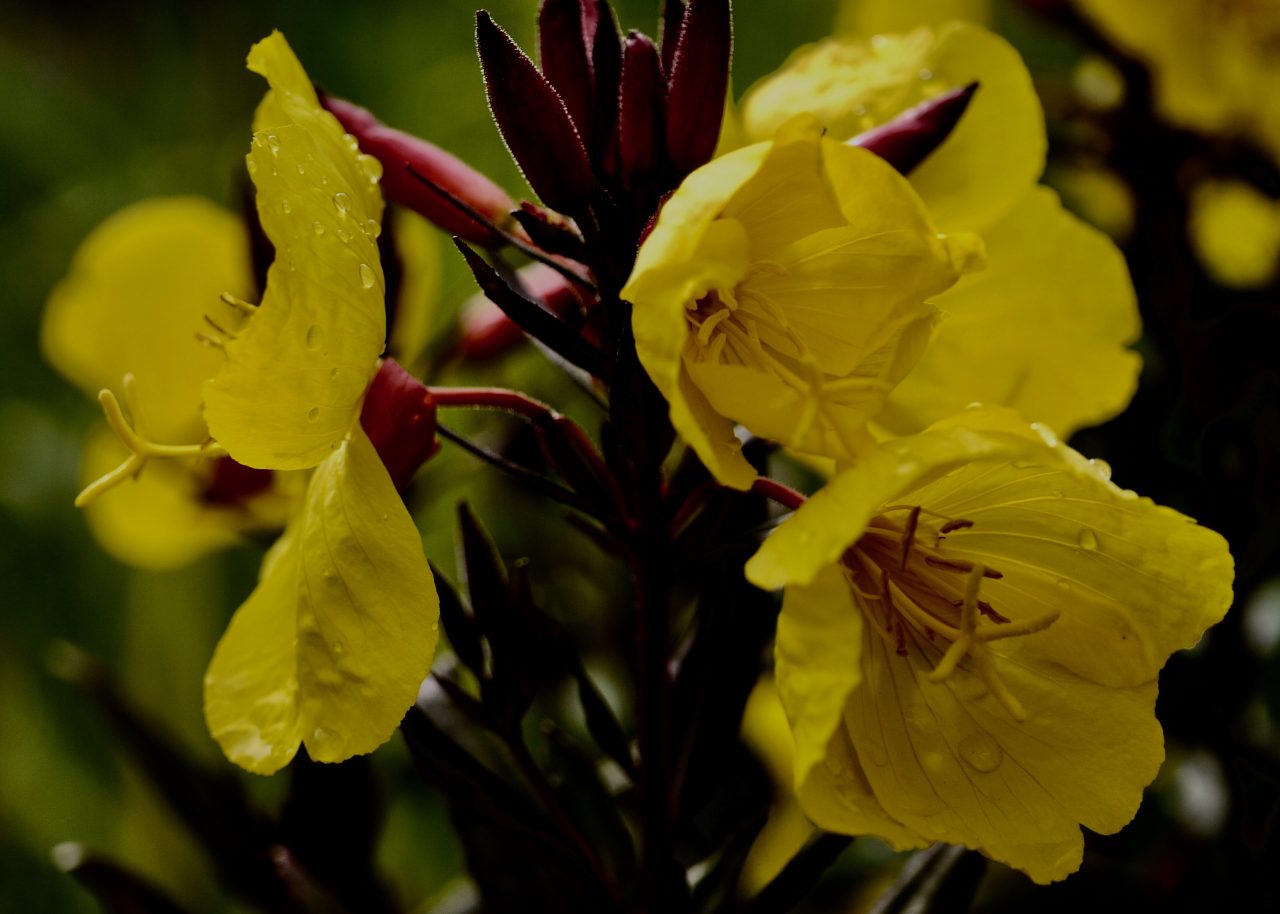
Oenothera Sonnenwende
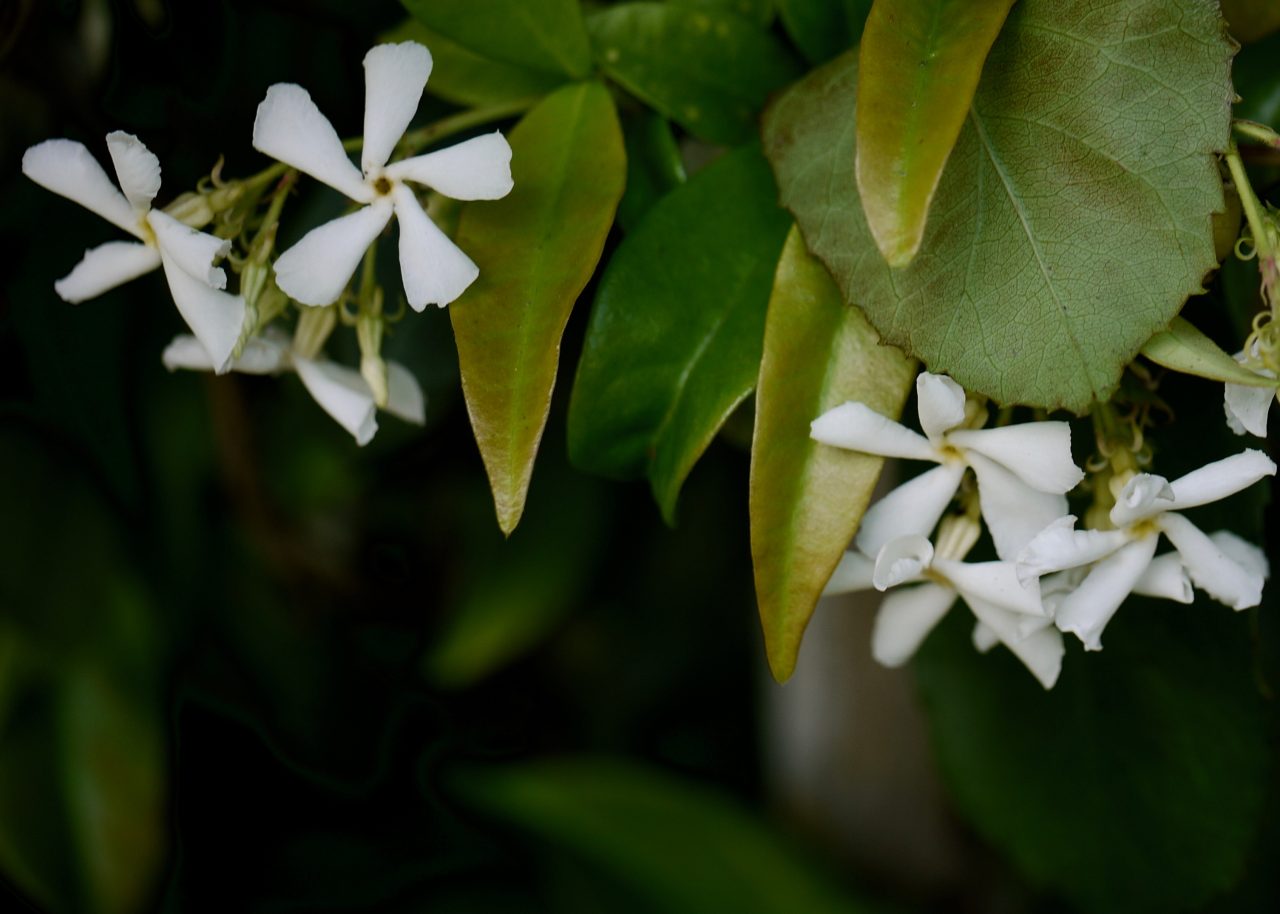
Trachelospermum jasminoides
Then there are fragrances for the night time. Typically subtle flowers which attract pollinators like moths. Hesperis matronalis, Evening Primrose (Oenothera), and Star Jasmine (Trachelospermum).
And finally, we must of course mention the obvious, the herbs. Rosemary can make an incredible fragrant hedge. Lavender too with proper siting and maintenance. A pot of mint on the windowsill by the kitchen, or the underrated savoury (Satureja), with its lovely late flowers. There can be a full year of fragrance in the garden. And whether you want lilies of blaring trumpets or a scent you have to hunt for, there are many ways to add scent to a garden.
